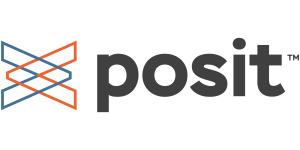POSIT at USM
This is the link to log in to POSIT system at USM

What is Posit Connect
Posit Connect makes the delivery of data-driven content fast, approachable and secure. Deploy everything you create in R & Python to fuel your business with the insights it needs.
Posit Connect is a powerful platform that enables data science teams to share insights, automate tasks, and distribute custom-built tools. Here are nine ways you can leverage Posit Connect:
-
Deploy Pins: Use the pins package to share data, models, and other Python or R objects across projects and with your colleagues. Pins can be automatically versioned, making it easy to track changes and re-run analyses on historical data1.
-
Share Quarto Sites: Create a Quarto site about your internal data science community and share it with new hires. This helps them quickly get up to speed on events and resources within your organization1.
-
Schedule Automated Reports: Set up automated reports for business stakeholders. Keep decision-makers informed with timely insights
-
Serve Insights via Slack: Deliver custom, individualized insights directly to stakeholders through Slack. It’s a convenient way to keep everyone informed
-
Custom Landing Pages: Build a custom landing page for business stakeholders. This makes content discovery easier and enhances accessibility to data products
-
Standardize Dashboards: Use internally created packages to standardize dashboards with consistent theming. Maintain a cohesive look and feel across your data visualizations
-
Leverage APIs: Enable Tableau users at your company to leverage work done by your data science team in R and Python. APIs bridge the gap between different tools and streamline collaboration
-
Connect Server API: Explore the Connect Server API to utilize usage data. Answer questions like: Is your CEO using a specific app? Understand how your data products are being utilized
-
Front-End Development: Deploy APIs that allow your team to work with front-end development frameworks (e.g., React, Angular, Vue). Collaborate seamlessly with front-end developers using their preferred tools
References: